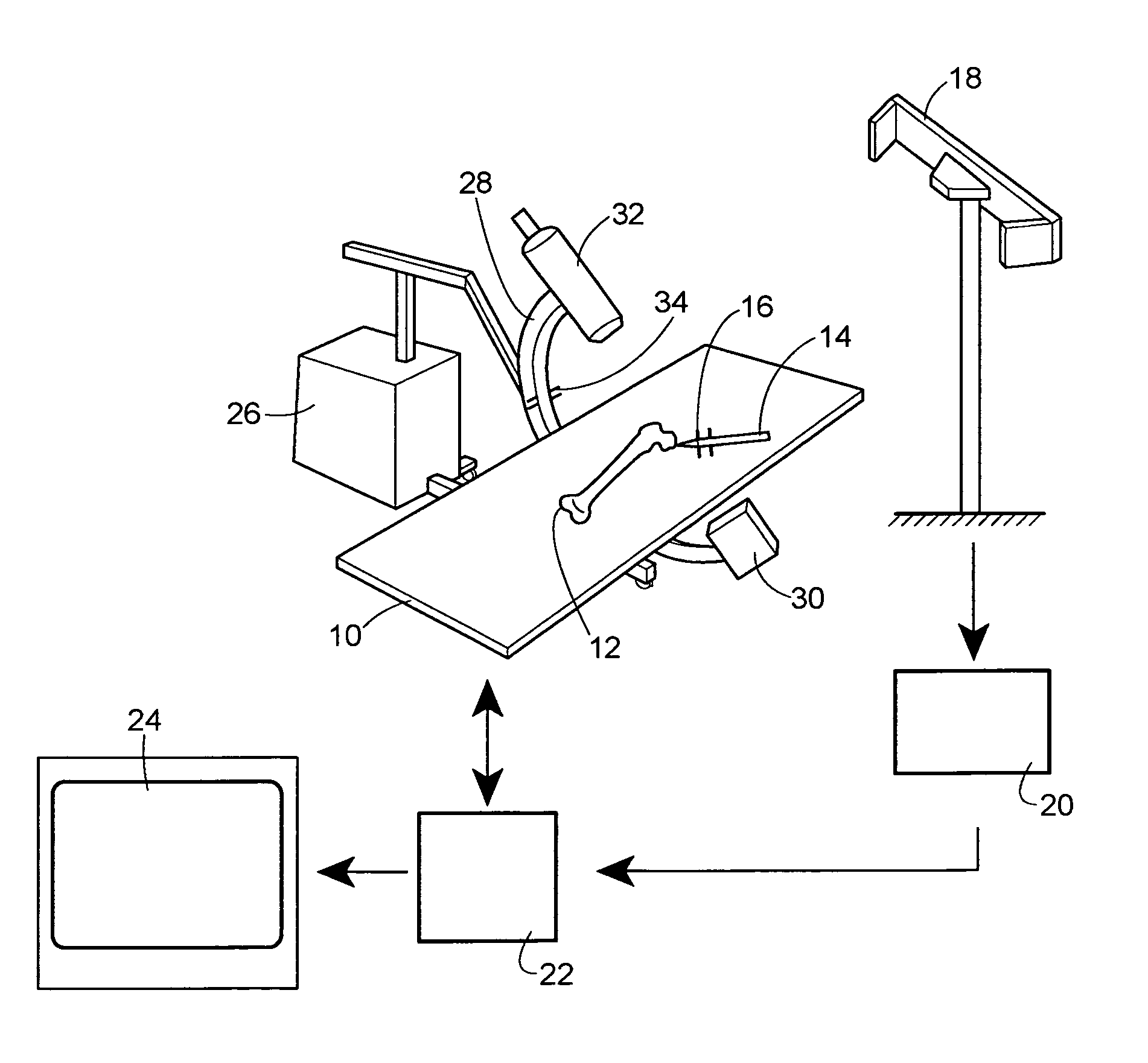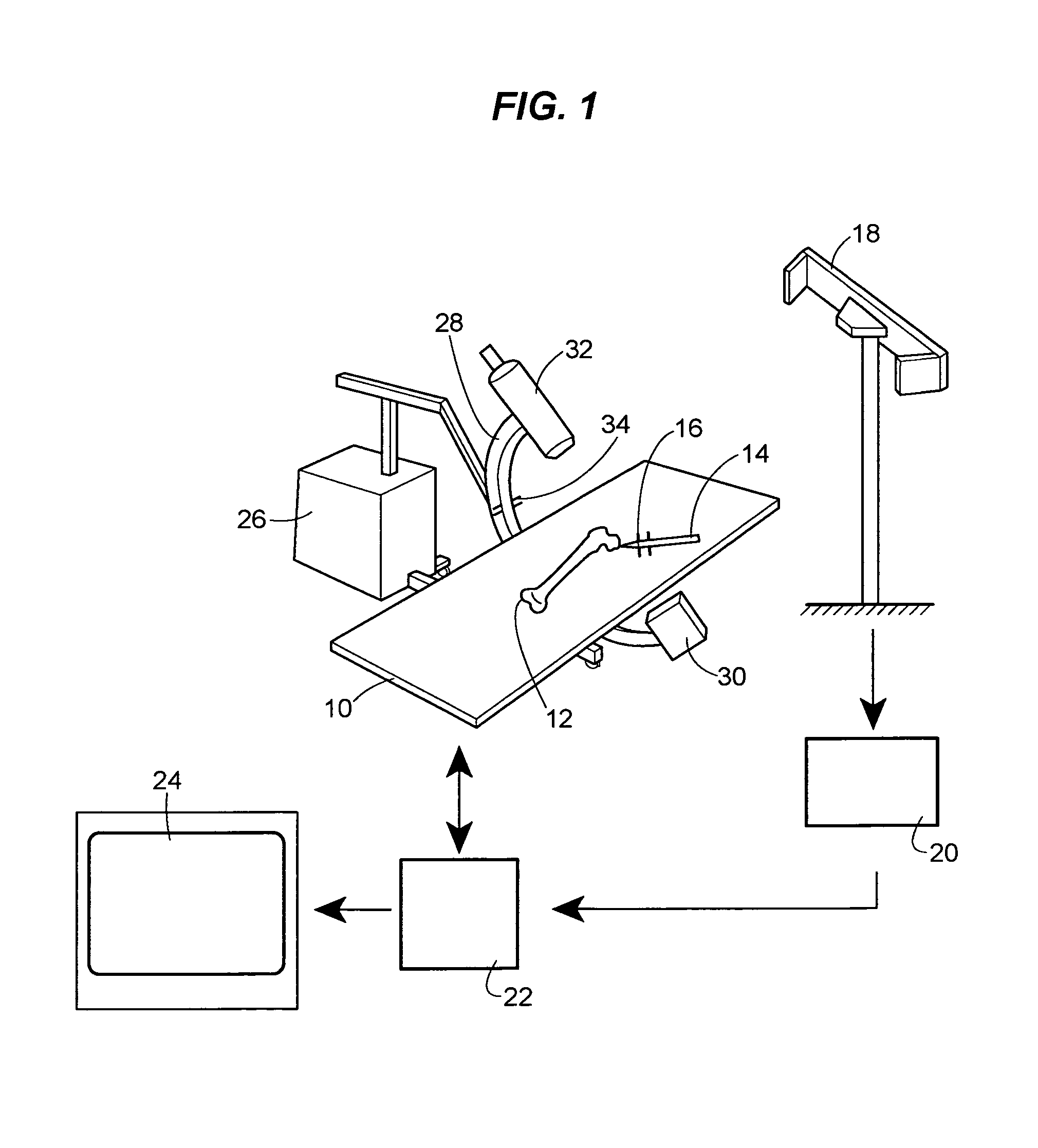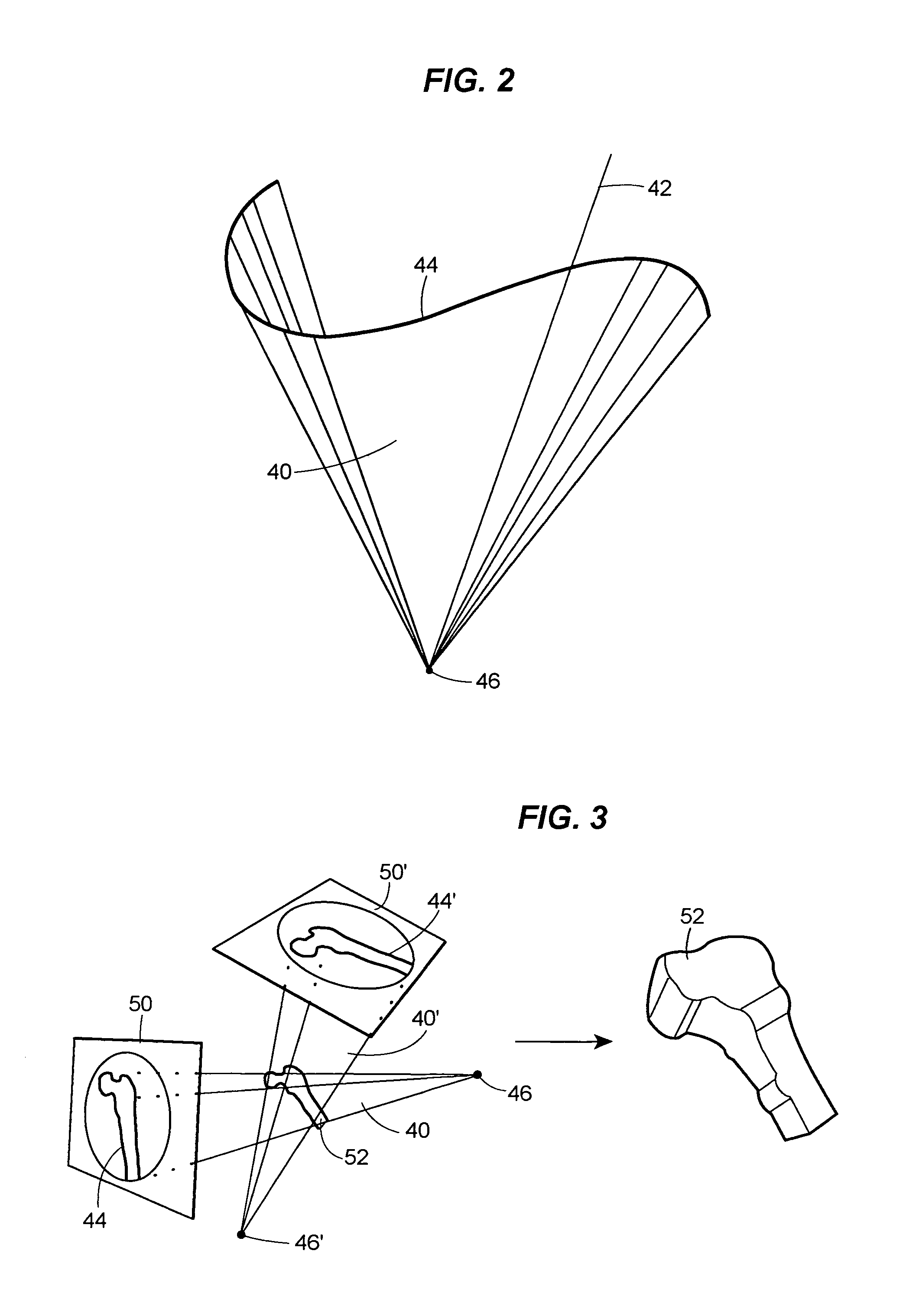Method for navigating in the interior of the body using three-dimensionally visualized structures
a three-dimensional visualization and interior technology, applied in the field of interior navigation using three-dimensional visualization structures, can solve the problems of difficult surgery for surgeons, often even impossible to optically survey the anatomical structure of patients, and insufficient two-dimensional images such as x-ray images, and achieve the effect of facilitating the alignment of the effective axis
- Summary
- Abstract
- Description
- Claims
- Application Information
AI Technical Summary
Benefits of technology
Problems solved by technology
Method used
Image
Examples
Embodiment Construction
[0040]FIG. 1 shows diagrammatically an operation scenario based on the visualization method according to the invention. Disposed on an operating table 10 is an anatomical object to be treated operatively in the form of a femur bone 12. The surgical intervention is performed with the aid of a surgical instrument 14. Attached to the surgical instrument 14 is a marker 16 of an infrared tracking system. Said marker 16 is designed to transmit infrared radiation. The infrared tracking system comprises, furthermore, an infrared detector 18 disposed in a positionally fixed manner. A localization computer 20 of the tracking system calculates the actual spatial position of the surgical instrument 14 provided with the marker 16 from the signals received by the infrared detector 18. The calculated spatial co-ordinates are transmitted by the localization computer 20 via a data bus to a central computer 22, where they are processed graphically and represented graphically on a viewing screen 24.
[0...
PUM
 Login to View More
Login to View More Abstract
Description
Claims
Application Information
 Login to View More
Login to View More - R&D
- Intellectual Property
- Life Sciences
- Materials
- Tech Scout
- Unparalleled Data Quality
- Higher Quality Content
- 60% Fewer Hallucinations
Browse by: Latest US Patents, China's latest patents, Technical Efficacy Thesaurus, Application Domain, Technology Topic, Popular Technical Reports.
© 2025 PatSnap. All rights reserved.Legal|Privacy policy|Modern Slavery Act Transparency Statement|Sitemap|About US| Contact US: help@patsnap.com



